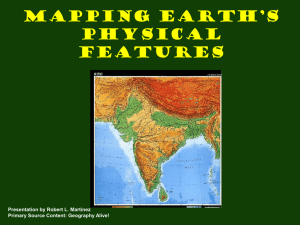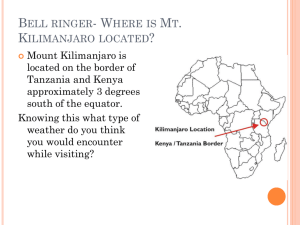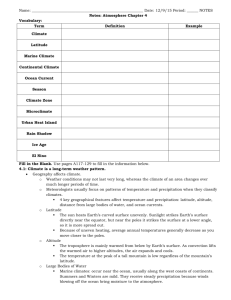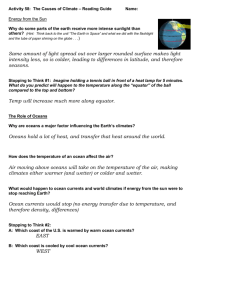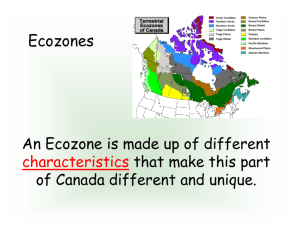7.2 Climate
advertisement
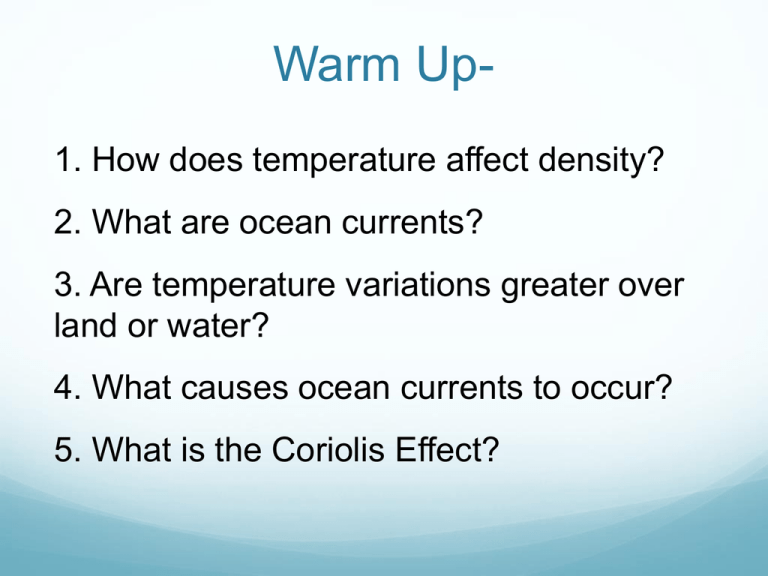
Warm Up1. How does temperature affect density? 2. What are ocean currents? 3. Are temperature variations greater over land or water? 4. What causes ocean currents to occur? 5. What is the Coriolis Effect? Warm Up1. How does temperature affect density? Higher temp (warm) = low density Lower temp (cold) = high density What is are ocean currents? An Ocean Current is a directed, continuous movement of ocean water generated by various forces. Currents are caused by various factors: Temperature Different salinity levels Winds Warm Up3. Are temperature variations greater over land or water? WATER – has more variation It doesn’t take land very long to heat up or get cold Differentiation heating, this idea is back! Warm Up4. What causes ocean currents to occur? Differences in heat & salinity- warm follows the cold water from equator to the poles Great Ocean Conveyer Belt http://www.youtube.com/watch?v=3niR_-Kv4SM http://www.youtube.com/watch?v=SdgUyLTUYkg Warm Up5. What is the Coriolis Effect? The Coriolis effect (the apparent shift in fluids or objects due to the rotation of the Earth) explains ocean current patterns curving in each hemisphere. CLIMATE ≠ WEATHER WEATHER = what’s going on outside RIGHT NOW CLIMATE = the weather over millions and millions of years. Factors that affect Climate Latitude Elevation As latitude increases, The higher the elevation the intensity of solar energy decreases is, the colder the climate Factors that affect Climate Topography Topographic features such as mountains play an important role in the amount of precipitation that falls over an area. Water Bodies Large bodies of water such as lakes and oceans have an important effect on the temperature because the temperature of the water influences the temperature of the air above it. Earth’s Major Climate Zone Categories Climate Classification Usefulness Examine the expected weather patterns for climate based forecasting What’s the upcoming winter going to be like? Lots of rain or lots of snow? Long-term shifts in climate boundaries Can we expect the “humid South” to shift north, changing Indiana’s climate over the next century? Köppen climate classification system The Köppen climate classification system uses mean monthly and annual values of temperature and precipitation to classify climates. Koppen Climate Zones Koppen Climate Zones GROUP A- Tropical Climates Tropical climates are without winters. Every month in such a climate has a mean temperature above 18oC. The amount of precipitation can exceed 200 cm per year. Locations: Tanzania, Indonesia, Brazil Koppen Climate Zones GROUP B- Dry Climates A dry climate is one in which the yearly precipitation is not as great as the potential loss of water by evaporation. Locations: Australia, Egypt, Saudi Arabia Koppen Climate Zones GROUP C- Mild Temperate Climates Temperate climates are those without extremes of temperature and precipitation (rain and snow). Locations: southeastern US, France, South Africa Koppen Climate Zones GROUP DContinental/Cold Climates Winters are severe with snowstorms, strong winds, and bitter cold from Continental Polar or Arctic air masses Locations: Russia, Alaska, Canada Koppen Climate Zones GROUP E- Polar Climates Polar climates are those in which the mean temperature of the warmest month is below 10oC. Locations: Antarctica, Greenland Today’s Assignment You will be creating two (2) Climographs Climoraphs combine temperature and precipitation data in one place. Each climate graph is made up of two major parts: a line graph displaying average monthly temperatures in degrees Celsius a bar graph displaying monthly accumulations of precipitation in millimeters. The horizontal axis shows the time period in months. Madras, India Today’s Assignment You will be creating two (2) climographs using Fahrenheit (°F) for temperature & inches for precipitation: one for Charlotte NC and the second will be a mystery location. Climograph Independent Lab Expectations Working towards completing your own graphs & lab Talking quietly in your seat Raise Hand for questions & permission to get up This is due by end of class for lab grade Warm Up 1. What is the difference between weather & climate? 2. What type of climate do you live in? 3. Why do we classify places by climate? 4. RELOOP: What are ocean currents & how do they move?


